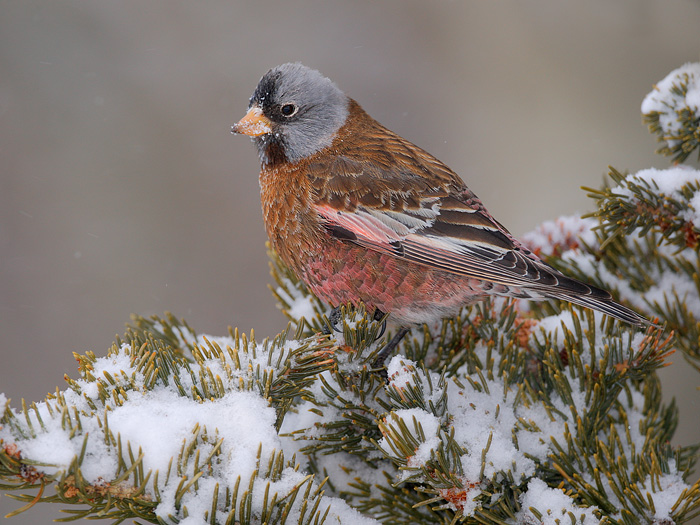
Leucosticte tephrocotis
SUBFAMILY
Carduelinae
TAXONOMY
Leucosticte tephrocotis Swainson, 1832.
OTHER COMMON NAMES
French: Roselin а tкte grise; German: Rosenbauch-Schneegimpel;
Spanish: Pinzуn Rosado de Corona Gris.
PHYSICAL CHARACTERISTICS
The gray-crowned rosy finch has a body length of about 6.5 in
(16.5 cm). It has a short, slightly forked tail, and a stout, conical,
pointed beak. The male is colored overall red, with pinkish
red patches on the wings, a dark tail, a gray head, and black
patches on the face. The female has a browner, more subdued
body coloration, and lacks a black patch on the chin. Juveniles
are gray-brown.
DISTRIBUTION
The gray-crowned rosy finch occurs in the Rocky Mountain
region and western Arctic tundra of North America, ranging
from Alaska, through western Canada, to the southwestern
United States. It breeds in higher-altitude habitats and winters
in lower altitudes.
HABITAT
The gray-crowned rosy finch breeds in alpine tundra above the
timberline, and also in northern tundra in Alaska and Yukon. It
winters in lowlands, including open habitats and conifer forest.
BEHAVIOR
Gray-crowned rosy finches are rather tame and unafraid of humans.
They are social birds, especially during the non-breeding
season when they occur in flocks. Males are weakly territorial
and the song is a repeated series of simple, high-pitched chirps,
often given in flight.
FEEDING ECOLOGY AND DIET
Gray-crowned rosy finches feed on seeds of various kinds, supplemented
by invertebrates. They forage on ripe herbaceous
plants and also on the ground and in snowbanks.
REPRODUCTIVE BIOLOGY
The female chooses the breeding territory and the male follows
and defends the female from other males. Breeding pairs
are monogamous and loosely colonial. The female builds a
cup-shaped nest of grass, rootlets, lichen, and moss, lined with
fine grass, plant down, and feathers. The nest is sited in clefts
of rock and cliffs, or sometimes in a cave or the eaves of a
building. A clutch of four to five whitish eggs occasionally dotted
with reddish brown are incubated by the female for 12–14
days. The altricial young are brooded by the female and fed by
both sexes. Both males and females develop a gular pouch in
the upper throat with an opening in the floor of the mouth so
that they can carry larger amounts of seed back to their young.
The young fledge in 16–22 days. Birds breeding in the mountains
have one brood per year; those living in lower tundra
have as many as two.
CONSERVATION STATUS
Not threatened. The gray-crowned rosy finch is a widespread
and abundant species.
SIGNIFICANCE TO HUMANS
None known.
Other popular Animals
Photo Gallery of - Gray-crowned rosy finch
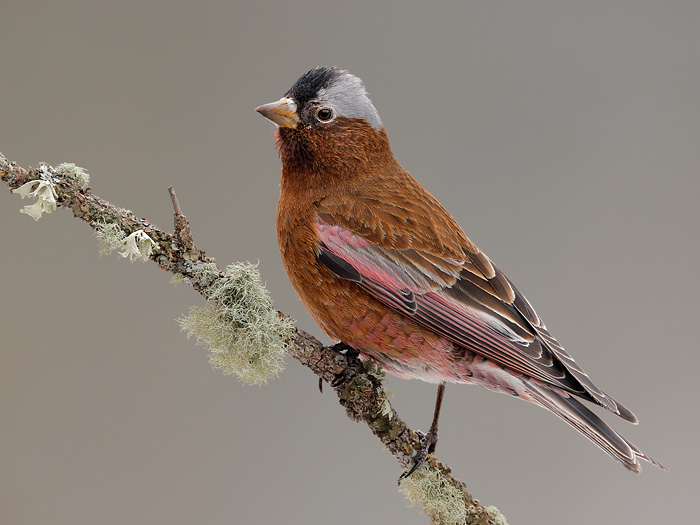
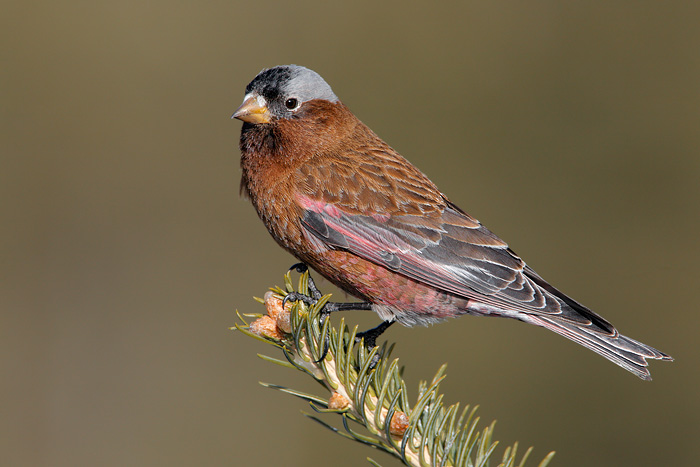
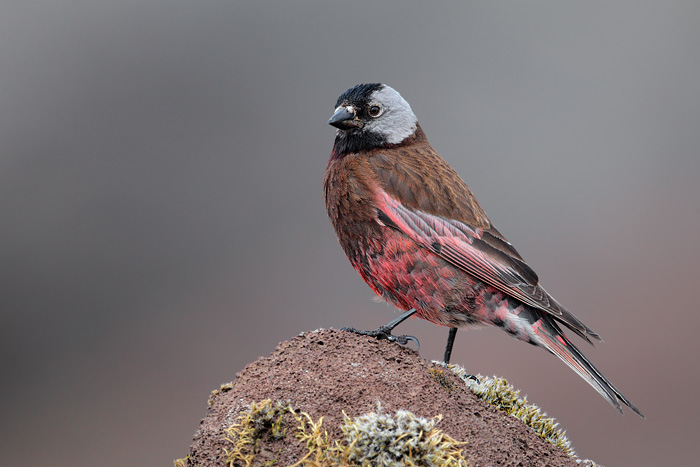
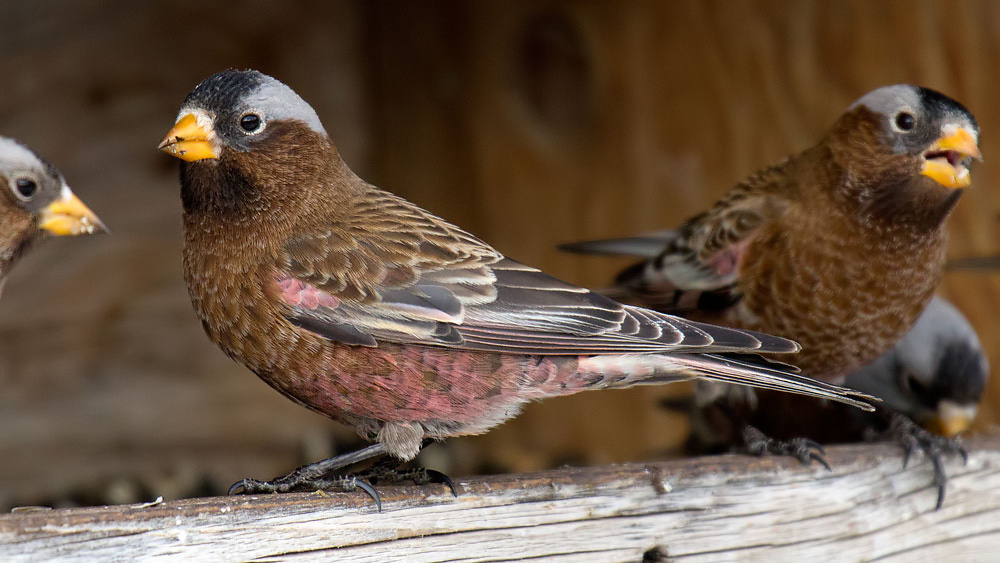
 Animalia Life
Animalia Life